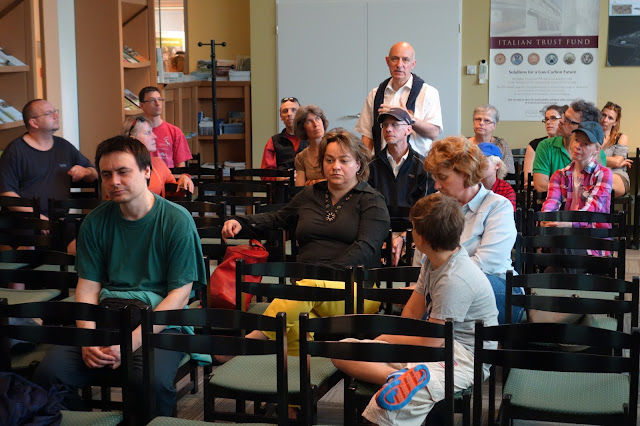 |
| The way it outta be. Image stolen from here. |
The Chain Bridge will soon be renovated, and the Hungarian Cyclists Club sees this as an opportunity to restore its original purpose as a quick, convenient link between central Pest and the Buda Castle.
In its current state, the Chain Bridge is clogged with traffic jams for large parts of every weekday, and on busy weekends, as well. This is because most of the daily users -- 57 percent, according to a city study -- cross by car, the least space-efficient mode of transport, with an average of just 1.2 passengers per vehicle. Meanwhile, 37 percent go by bus (capacity around 80), but they don't get any reward for making a more space-efficient, environmentally friendly choice. They're stuck in the same, creeping traffic jams as the cars.
Bicyclists comprise about 6 percent of daily bridge traffic. And although the bike may be the fastest way to cross the Chain Bridge, it's not a pleasant way to go because you're either squeezed between cars and the bridge railing, or you're maneuvering amongst pedestrians on the sidewalks, where many regard you as a nuisance.
If the bridge was wider, buses could have priority lanes, but it isn't. A common-sense solution is to kick out the cars, and give it back to people. In this way it could be more like the Charles Bridge in Prague -- part and parcel with its eye-catching, historic surroundings, and free of noise and traffic fumes from cars.
The Cyclists Club proposes to start next summer, after school's out, by conducting a temporary trial in which buses would be given top priority in traffic. Without car congestion, bus departures could be more frequent, and the service would be much faster and more reliable. Top speed on the bridge would be held at 30 kph in order that cyclists can share the roadway safely and harmoniously. And pedestrians will have the sidewalks to themselves -- as they should. Last but not least, the Chain Bridge will once again be a feasible route for emergency vehicles.
Many will wonder where all the car drivers will go. But as with the pedestrianisation of Vaci utca and Raday utca, or the traffic reductions on the north-south axis from Ferenciek tere to Szabadsag ter -- people will find alternatives. Either a different route or a different vehicle choice.
If you support this vision, you can sign the Cyclists Club's online petition here. If you'd like to join a cycling demonstration, here are the coordinates:
When: Sunday, October 11. Gathering starts at 2:30 p.m., parade departs at 3 p.m.
Where: Széchenyi tér in the parking area in front of the Hungarian Academy of Science (MTA)
Parade route: Széchényi tér - Chain Bridge - tunnel - U-turn at Attila út - tunnel - Chain Bridge - Széchényi tér. Repeat route once, then return to Hungarian Academy of Science.
Demonstration announcement in Hungarian.
After the demonstration, there will be a public forum on the topic.






